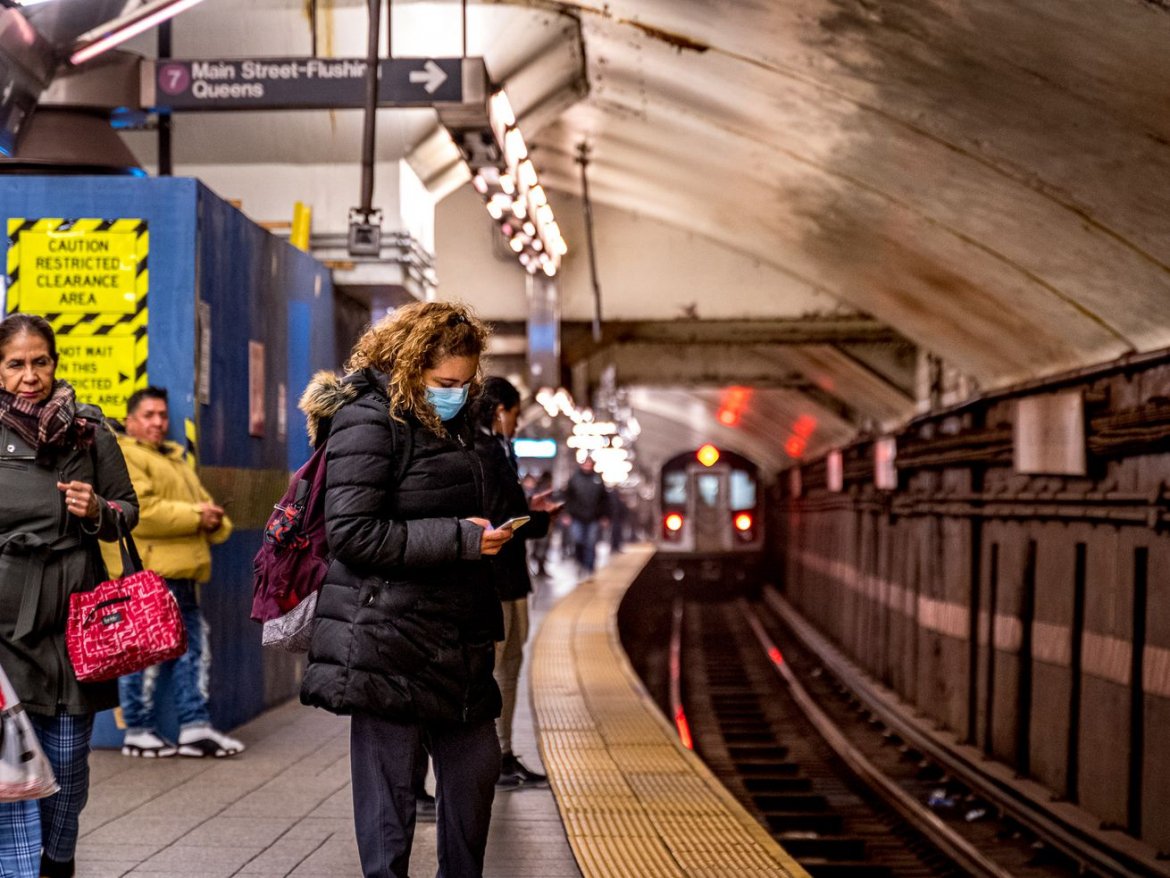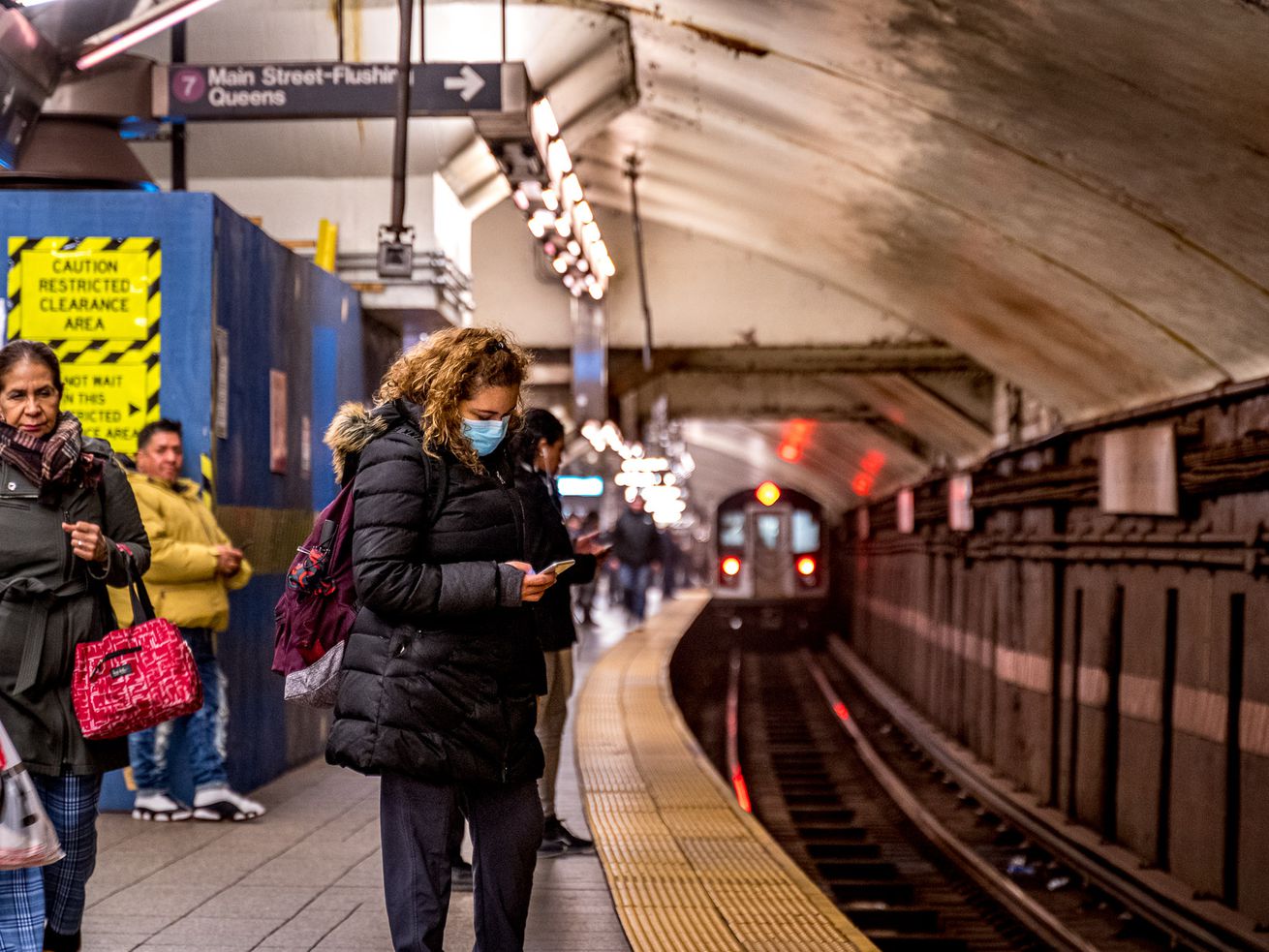
Here’s how the coronavirus pandemic is affecting public transit

Amid plunging ridership and service cuts, here’s what you need to know about public transit during the COVID-19 outbreak
New York city and state officials have tried to slow the novel coronavirus pandemic by shuttering all nonessential businesses, closing schools, and urging residents to hunker down at home. As a result, ridership has plummeted across New York’s mass transit systems—subway, buses, commuter rail, and ferries—as transportation officials scramble to keep service running. But as the city’s COVID-19 cases continue to climb, transit workers are becoming ill and service reductions seem imminent.
Health officials have cautioned those feeling sick—and even those who are not—from leaving home unless the state has deemed your work essential (health care, transportation, law enforcement, etc.) or to pick up groceries and medication. But if you absolutely have to leave your home, here’s what you need to know about COVID-19’s impact on public transit.
This post will be periodically updated with service changes.
Subway
As of March 23, at least 30 MTA employees have tested positive for COVID-19. That same day MTA officials temporarily halted C train service as the coronavirus continued to infect the authority’s frontline workforce; the C line has since been restored. Service on other lines, however, is being scaled back.
Trains will be suspended on the B, W, and Z lines—and express service across the system will be reduced. On the 7 and J lines, express service has been entirely suspended. N trains won’t run express in Manhattan. The same goes for the 4, 5, and 6 lines in the Bronx. D trains will make local stops in the Bronx but run express in Manhattan and Brooklyn, while the F line will make all local stops in Manhattan and Brooklyn and continue to run express in Queens. The Staten Island Railway will make all local stops, running every 20 minutes during peak hours and hourly overnight.
Worker shortages have also forced the MTA to cut service on stretches of lines. This includes on the 5 line between Nereid Avenue and East 180 Street in the Bronx (use 2 service instead); between Bowling Green and Brooklyn College-Flatbush Avenue (use the 4 and 2 service as an alternative); on the A line between Broad Channel and Rockaway Park (use the S shuttle); and E train service between Jamaica-179 Street and Union Turnpike (use the F).
All told, the novel coronavirus has crippled subway ridership, with the number of straphangers entering stations sharply declining compared to this time last year. The resulting dive in revenue has prompted the MTA to seek a $4 billion relief package from the federal government. For the average rider, the subway’s new reality is clear with eerily empty trains during typically bustling rush hours and workers donning masks and gloves.
Buses
As of March 23, bus riders must board all MTA buses from the rear doors; only those with limited mobility will be allowed to board in the front to use ramps and accessibility seating. The move is an attempt to protect bus drivers from the spread of the novel coronavirus. Plastic yellow chains are bing used to close off the front section of buses, keeping drivers a safe distance from riders during the city’s pandemic.
People are still be expected to pay fares so long as on-board payment boxes or Select Bus Service ticket machines are accessible, says the MTA. Express bus customers can board as usual but as a precaution to drivers, they are barred from sitting in the first three rows.
Commuter rail
The Metropolitan Transportation Authority’s commuter rail lines—Metro-North and the Long Island Rail Road—are operating at normal weekday schedules except for Metro-North’s west of Hudson lines, which are operating on a weekend schedule until further notice. Ticket counters for both lines are closed, instead customers can use ticket vending machines or the MTA eTix app.
Citi Bike
Biking is the only way of getting around that has seen a surge of activity amid the novel coronavirus outbreak, with Mayor Bill de Blasio encouraging New Yorkers “to bike or walk” in early March. The city’s Department of Transportation (DOT) saw cycling traffic over its bridges spike between March 1 and March 10. Citi Bike also saw a 67 percent uptick between March 1 and 11, compared to the year prior.
Ridership on Citi Bikes and over city-run bridges has since dipped, but that’s likely tied to city and state officials majorly curtailing New Yorkers’ movements over the last couple of weeks. Regardless, Citi Bike is working with DOT to install additional docks and stations in busy parts of Manhattan. Staffers continue to disinfect high-contact surfaces each time they arrive in the Lyft-owned company’s depot, and at the start of each shift, workers are also disinfecting surfaces on vans used to transport the bikes.
Ferries
All NYC Ferry routes are operating on a modified schedule until further notice. As of March 23, weekday schedules will be operating with a reduced frequency to account for lower ridership while weekend schedules will remain the same.
The Staten Island Ferry’s ridership has also taken a major hit, with a 70 percent dip in recent days. Vessels are operating roughly every 20 minutes from St. George and Whitehall terminals during the morning and evening rush hours on weekdays and hourly from midnight to 5 a.m.
Love where you live


